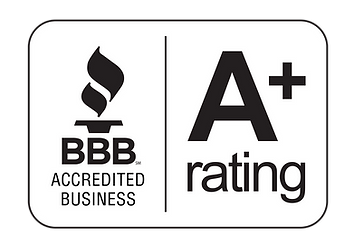Is the Affordable Care Act a Credible Way to Mitigate Damages?
The Intersection of ACA with Personal Injury Cases

The Affordable Care Act was supposed to make health insurance more affordable however, market developments as well as large rate increases at renewals since its enactment, present significant challenges to using ACA policies as a means to mitigate damages during settlement negotiations.
Claims and Litigation Management Suggested Use of ACA to Mitigate Damages in Your Personal Injury Case at Mediation
“Even before trial, the availability of insurance through the ACA may be more effectively raised in settlement discussions. Defendants should prepare multiple cost scenarios, including:
- the annuity cost of the plaintiff’s life care plan, the annuity cost of the plaintiff’s life care plan with insurance.
- the annuity cost of the defendant’s life care plan, the annuity cost of the defendant’s life care plan with insurance; and
- the annuity cost of the plaintiff’s life care plan utilizing the proper paid rates for the medical goods and services identified in the life care plan.
- Additional savings can be realized on these annuitized cost projections by utilizing medical underwriting. The structured settlement consultant will ascertain rated ages from the life insurance carriers.
- From these analyses, you can then work with your defense team and annuity broker to develop settlement options. The guaranteed income tax free annuities that are used to fund the structured settlements add a protective layer to the plaintiff knowing that they cannot outlive their settlement.
- Those options can include utilizing special needs trusts and Medicare Set Asides as further vehicles to provide for a plaintiff’s future needs at more realistic values. In the end, the goal is to demonstrate to plaintiff, utilizing all available insurance and public benefit options, how their medical care can be maximized using the amounts being offered in settlement” [ Source: CLM 2016 Orlando Florida]
The CLM piece argued that ACA is here to stay having survived multiple high court challenges and the longevity of insurers.
Challenges to ACA Use in Settlement Negotiations
Settlement offers which trade the projected cost of future medical care for a structured settlement that pays for an ACA compliant medical insurance policy do not completely solve the problem for the following reasons:
- Uncertainty of continued insurer participation in the marketplace. Several major health insurers have left exchanges.
- Uncertainty of cost of premiums. Without premium rate stability it is impossible to accurately fund medical insurance premiums with a structure. One will often come up short. If you have a structured settlement that pays $1,000 /month with a 3% COLA and then premiums go up by 10% where does that leave you? Then run that deficit out 10 years or longer. In New York, in the individual market, health insurance rates will increase by an average of 3.7% in 2022. The state says insurance companies had requested an average 11.2% increases. In Connecticut, the state Department of Insurance approved an average rate hike of 5.6% for individual health plans in 2022. The carriers had requested an average increase of 8.6%. Some will be eligible for subsidies in the form of credits. See the helpful Obamacare Subsidy Calculator from Healthcare.org, but those ineligible for the subsidies often face significant increases.
- A possible way to at least partially address the variability is to use an index linked structured settlement such as IStructure by Independent Life Insurance Company [It should be noted that IStructure is not available in New York].
- Life care plans in serious personal injury cases (e.g. burn victims) tend to have life care plans with multiple potential outcomes that need to be addressed.
Why have premiums on ACA health insurance risen so much?
The market is smaller than projected. It was contemplated that an individual mandate and an associated penalty would help hold coverage costs down for everyone, by encouraging young, healthy people to pay premiums to get themselves insured.
Opponents argued that the provision was an unconstitutional requirement that people buy a commercial requirement. Many suits were filed challenging the constitutionality of the provision in the federal courts. The Tax Cuts and Jobs Act of 2017 (TCJA), set the individual mandate penalty at zero, beginning 2019 and all subsequent years.
These states and DC have individual mandates with penalties for non-compliance:
- California (effective in 2020)
- Rhode Island (effective in 2020)
- The District of Columbia
- Massachusetts,
- New Jersey, and
- Vermont (Vermont’s mandate took effect in 2020, but it does not include a penalty for non-compliance, so it’s essentially the same as the current federal mandate).
The people who have bought health plans overall are sicker than predicted. Then you add in the Covid-19 crisis to the mix. And health insurers have incurred larger losses than anticipated. Health care costs continue to rise as anyone who pays for health insurance can readily observe.
What is the Collateral Source Rule?
The collateral source rule bars the admissibility of evidence at trial to show that a plaintiff’s losses have been compensated from other sources, such as the plaintiff’s insurance or workers compensation. The collateral source rule is a state-by-state thing.
HELPFUL RESOURCES
From a Defense Perspective
The Collateral Source Rule and Obamacare Darryl S. Weiman, MD JD Professor of Cardiothoracic Surgery at the University of Tennessee; also, a lawyer published in the Huffington Post May 24, 2016
Can the ACA Help Reduce Jury Awards? Westchester County Business Journal by Gerald J. Heubel and James W. Kachadoorian October 30, 2015
Using the ACA to Minimize Damages in Injury Settlements in Wisconsin National Business Institute Matthew Falk, John P. Loringer and Mark D. Malloy December 2014
How Obamacare May Limit Projected Expenses in Personal Injury Life Care Plans 2014 Mark Yagerman ‘Max Bookman Smith Mazure Director Wilkins Young & Yagerman, P.C.
Can the Affordable Care Act Be Used to Mitigate Future Damages, by Jack Hipp and Caryn L. Lilling Winter 2014 Litigation Management
Obama’s ACA Severely Limits Future Economic Damages on Behalf of a Minor: Is This Good or Bad? Stephen Brzezinski JD 29th Annual Steamboat Perinatal Conference January 2014
Affordable Care Act Has Potential to Limit a Defendant’s Exposure for Future Medical Costs in New York Personal Injury Litigation, January 17, 2014, by Wilson Elser lawyers John D. Morio Joseph A.H. McGovern
The Patient Protection and Affordable Care Act May Be Plaintiffs’ Foe in Personal Injury Actions December 10, 2012 Kimberly A. Schroder, Hall Remdeer Killian Heath & Lyman, Indianapolis, Indiana
Potential Effects of the Affordable Care Act on The Award of Life Care Expenses by Joshua Congdon-Hohman and Victor Matheson College of the Holy Cross Department of Economics September 2012.
From A Plaintiff Perspective
The Collateral Source Rule and Obamacare Darryl S. Weiman MD JD The Huffington Post May 24 2016
The Future of Medical Care Damages by Jay Angoff September 2014 Trial Magazine, a publication of the American Association for Justice.
Aidan Ming-Ho Leung v. Verdugo Hills Hospital, 2013 WL 221654 (CA Ct. App., 2013) The court held that “such evidence, standing alone, is irrelevant to prove reasonably certain insurance coverage…because it has no tendency in reason to prove that specific items of future care and treatment will be covered, the amount of that coverage, or the duration of that coverage
From an Elder Lawyer/ Special Needs Lawyer Perspective
The Affordable Care Act David Lillesand and Scott Solkoff National Aging and Law Institute November 2013
The Impact of the Affordable Care Act on Personal Injury Settlements Thomas D. Begley Jr. May 1, 2013
Obamacare and Special Needs Trusts David Lillesand Lillesand & Wolasky Florida Special Needs Law Blog August 13, 2012















